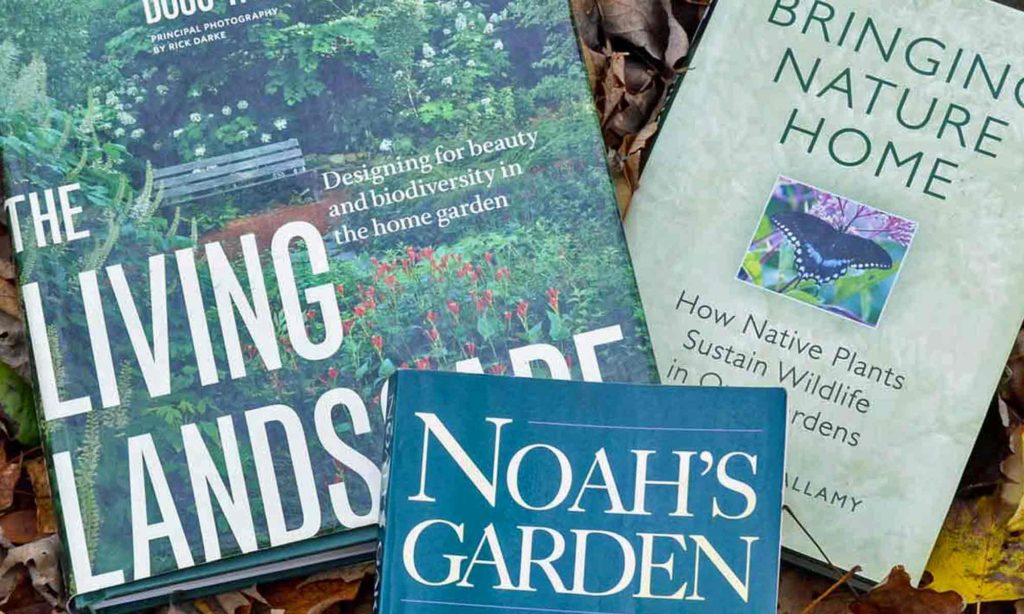
Below are some of our other favorite resources for habitat gardening. I think if we had read and studied only these, we would have learned all the basic concepts.
Here are more resources we’ve learned from and enjoyed, including plant reference books and websites as well as wildlife books and websites. Apps, too!
Books we’d recommend
We’ve read a lot of books, articles, and website materials over the past years. Most all of them were interesting and useful, but these few stand out. They changed how we thought about our land, inspired us to change our landscaping practices, and gave us the information we needed to do so.
The Nature of Oaks: The Rich Ecology of Our Most Essential Native Trees
by Doug Tallamy
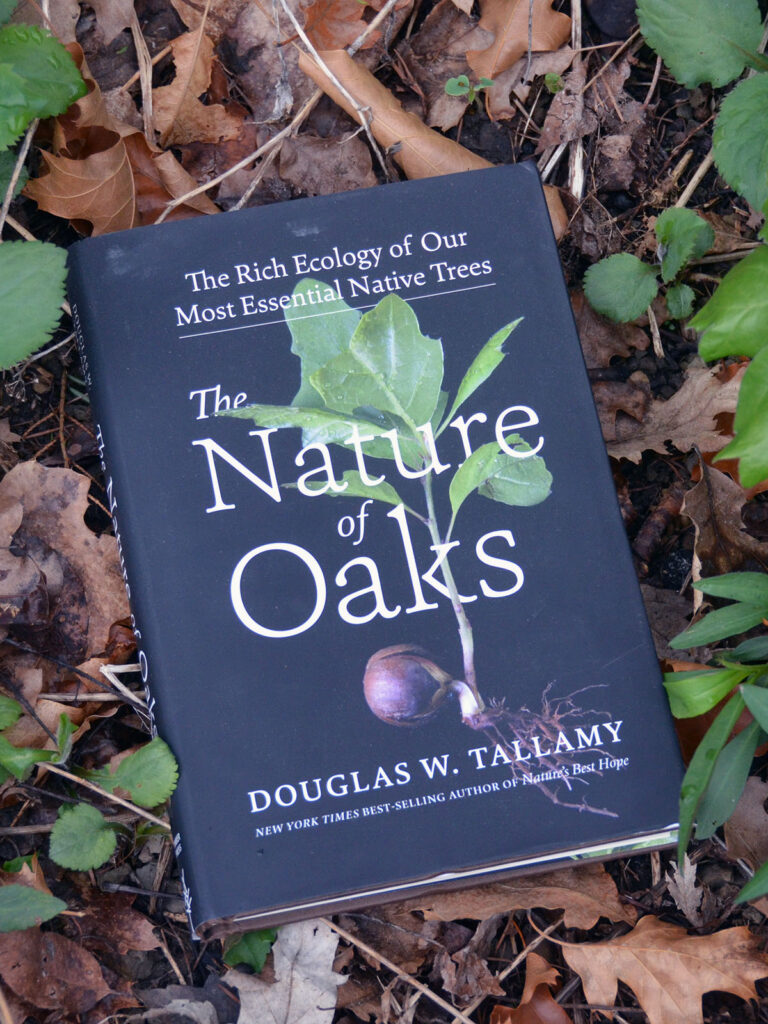
Excellent! Who knew that a whole book about one type of tree could be so fascinating!
It inspired our HGCNY Wild Ones chapter to help fund a forest restoration featuring oaks (among other trees and understory plants) at a local nature center.
Nature’s Best Hope: A New Approach to Conservation that Starts in Your Yard
by Doug Tallamy
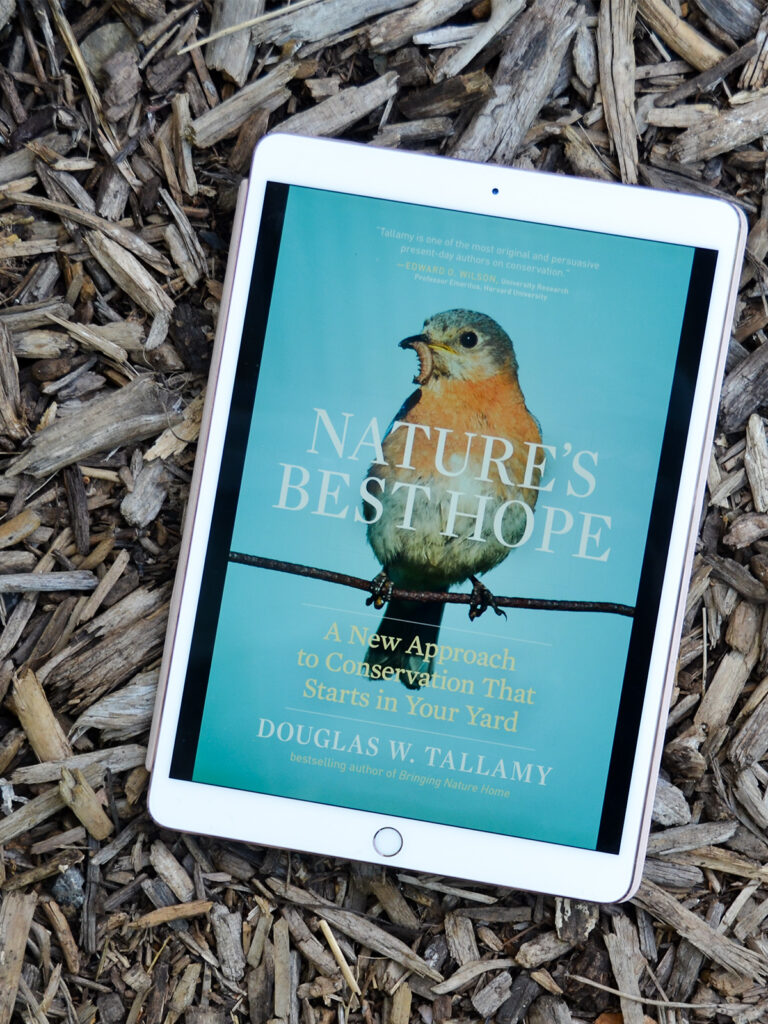
Tallamy’s 2020 book.
A comprehensive environmental message that convincingly argues that OUR YARDS can play — indeed, MUST play — an important part in ensuring that we leave a legacy of a living and livable planet to future generations of people and wildlife.
NOTE: Tallamy is a Wild Ones Honorary Director.
Bringing Nature Home: How Native Plants Sustain Wildlife in Our Garden
by Douglas Tallamy.
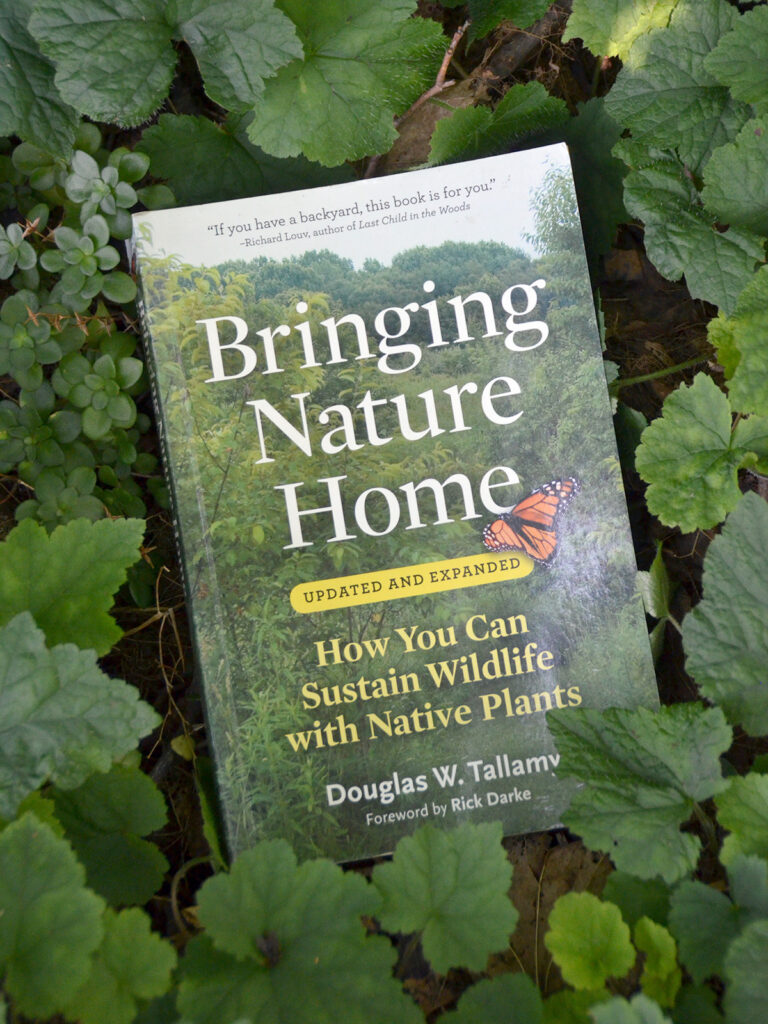
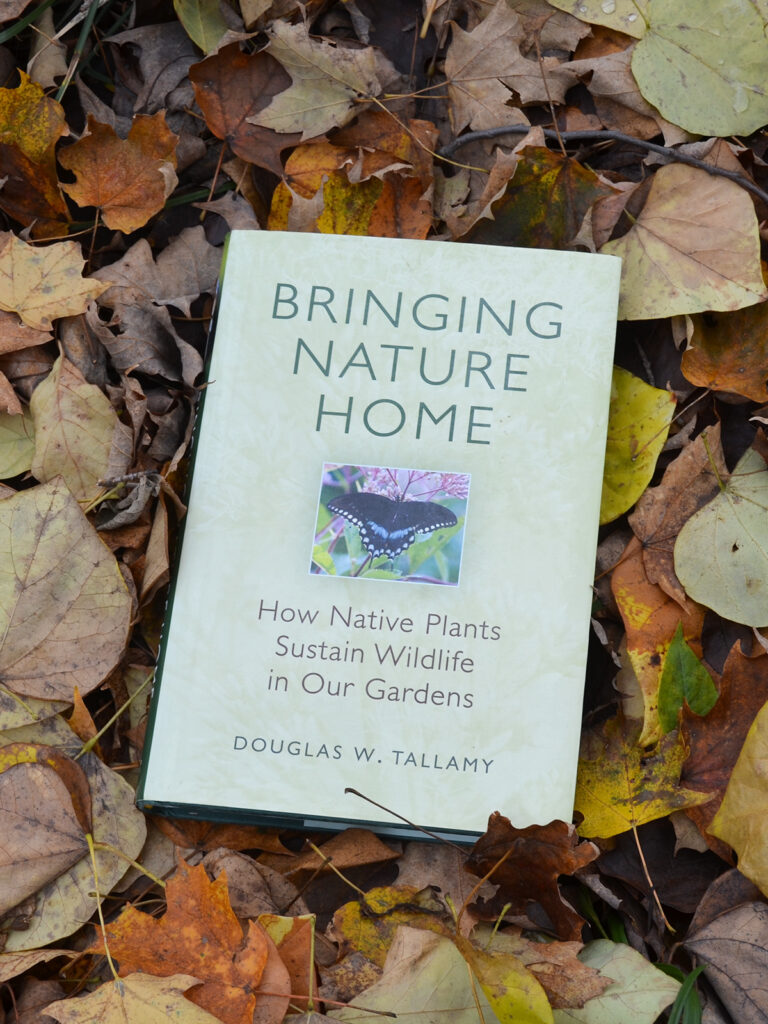
We had already had a habitat garden for about ten years when the first edition of this book was published. Even though I had read a lot about habitat gardening at this point, I found this book transformative. (We aren’t the only ones who have found this book enlightening. It has become an extremely popular book nationally.)
We already knew native plants were important because they belong here and contribute to a sense of place. But this book provided additional reasons — importantly, backed by solid scientific research — for our belief in the value of native plants.
Based on his research at the University of Delaware, Tallamy explains WHY gardening with native plants is so important. We now have new appreciation for how our landscaping choices are essential for preserving biodiversity on earth. To get a taste of Tallamy’s ideas, read his Wild Ones Journal article called “Gardening for Life,” available as a free download on our HGCNY website on the Fact Sheets page.
It also explained why there’s such an urgent need for us to take action in our own yard. The experiences Dr. Tallamy shares in that book and in his other endeavors have inspired us to continue.
The Living Landscape: Designing for beauty and biodiversity in the home garden
by Rick Darke and Douglas Tallamy.
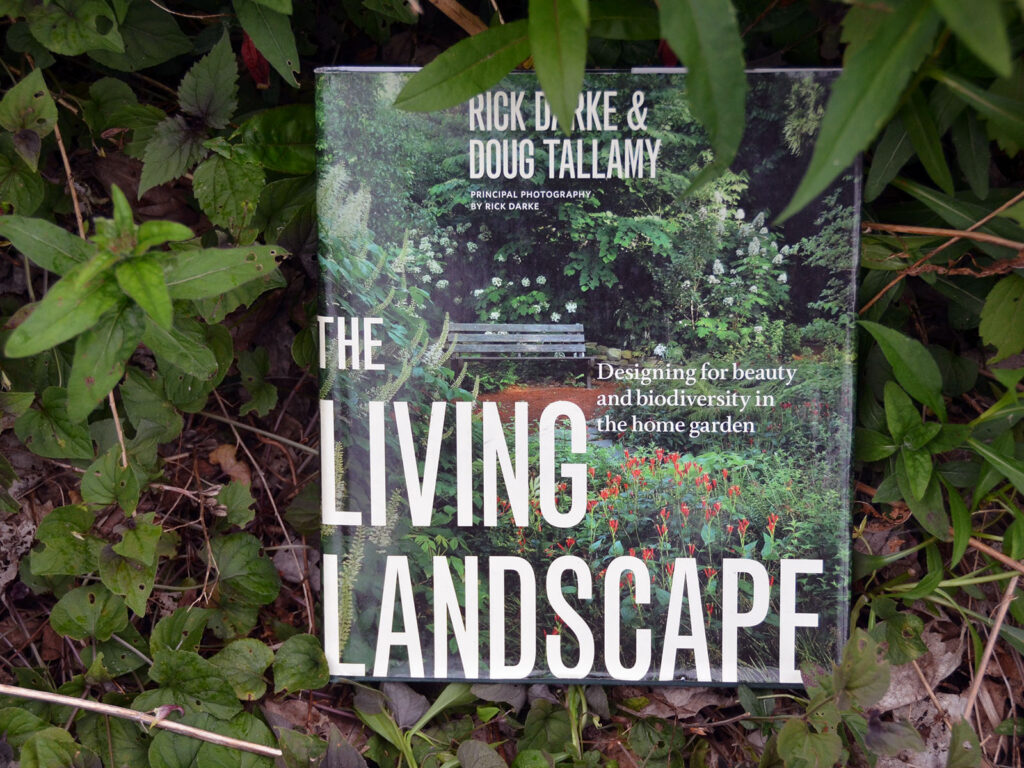
Awesome! This book offers a comprehensive view of what creates a living landscape that is also beautiful. Indeed, this book addresses the very idea of a “beautiful landscape,” a very welcome discussion as our society’s current view of “beauty” is a sterile expanse of lawn decorated with a few ornamental plants.
It also offers practical tips on how to create a multi-dimensional landscape that supports life not only in our own yards, but in the world beyond our yards.
Noah’s Garden: Restoring the Ecology of Our Own Back Yards
by Sara Stein
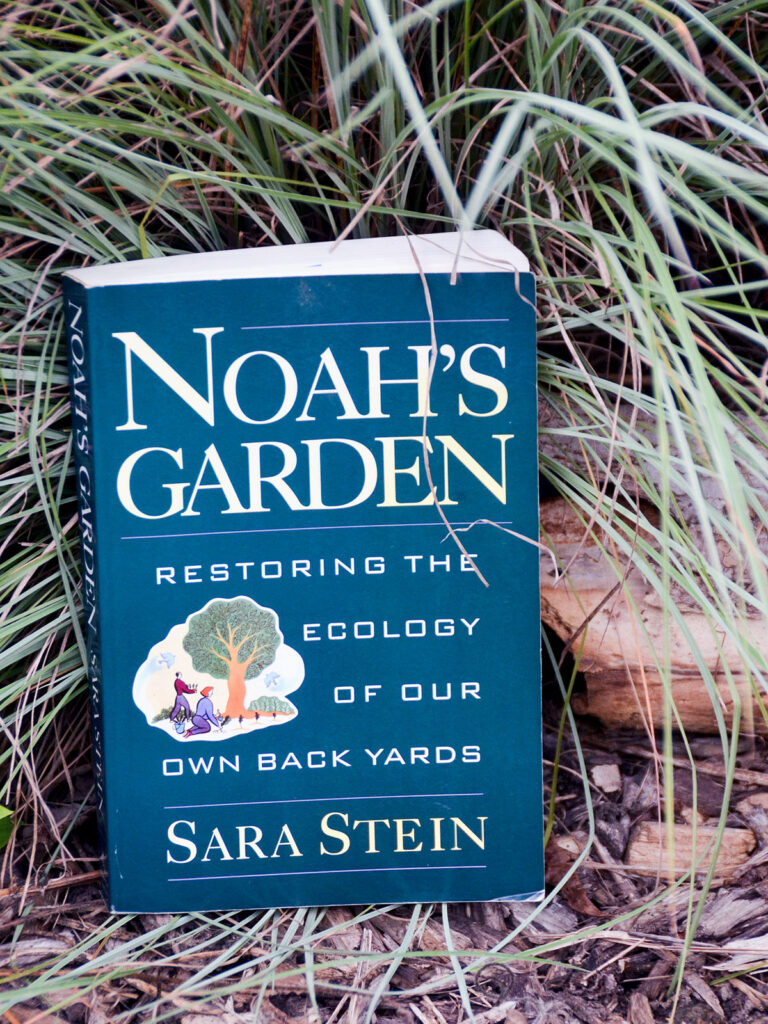
AfterThe Landscaping Revolution (described in More resources), this was the next book I read. It’s the inspiring story of how Stein “un-gardens” the ornamental landscape she had created after discovering that all the creatures she had previously enjoyed had disappeared after she removed the native plants and habitat they depended on.
She was guided by many of Tallamy’s principles years before science validated her practices. She focuses on recreating native plant communities more than do most books. She was WAY ahead of her time (and a wonderful writer as well).
NOTE: Stein was a Wild Ones Honorary Director.
Planting Noah’s Garden: Further Adventures in Backyard Ecology
by
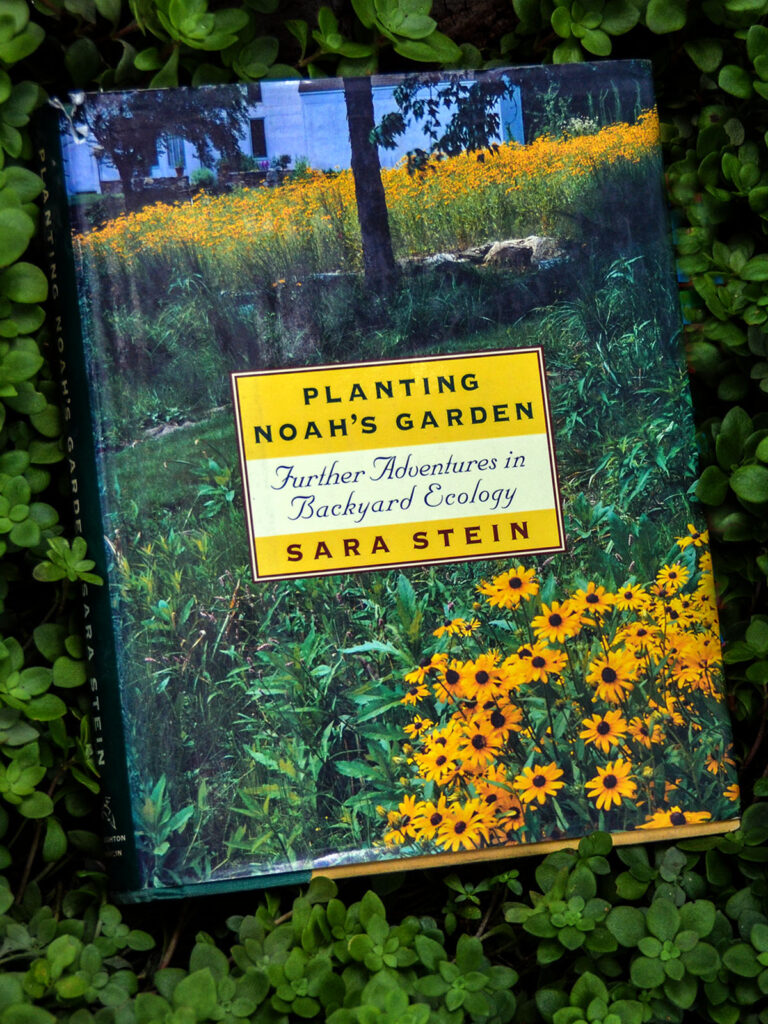
Also inspiring, but deals more with the nitty-gritty details than does Noah’s Garden. Stein offers many charts, lists, and so on to help create natural plant communities. (Unfortunately, it seems to be out of print — why do they do that to these classics? — but it’s often available as a used book, or at least in the library.)
Attracting Native Pollinators: Protecting North America’s Bees and Butterflies
by The Xerces Society
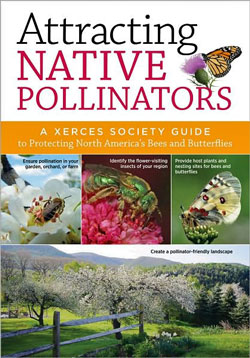
I loved the previous Xerces book, Pollinator Conservation Handbook, but this successor is fantastic. It’s extremely well-organized, comprehensive, and very accessible to a layperson like myself.
Highly recommended resource about an extremely important issue — helping conserve our native pollinators!
All of the Xerces materials are great!
Designing Gardens with Flora of the American East
by Carolyn Summers
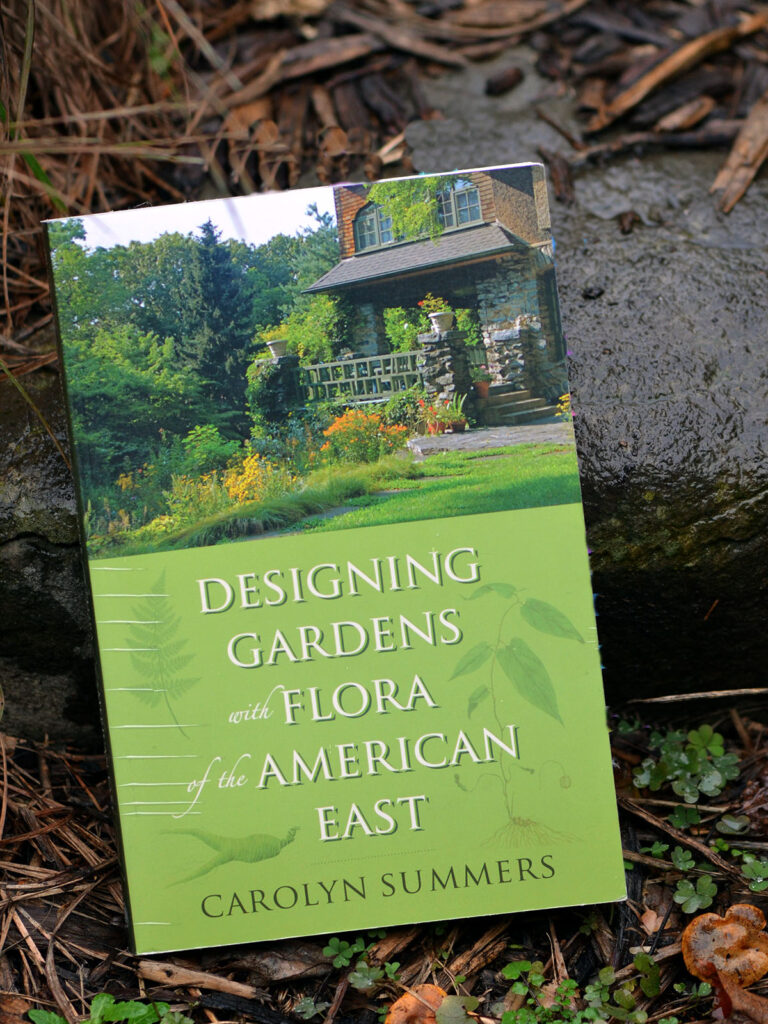
Based on Tallamy’s principles, this book offers many practical ways to implement them in beautiful and life-supporting landscape designs.
A good resource for both homeowners and landscape professionals, especially if they want to have a conventional-looking landscape that is also earth-friendly.
More resources
Here are more resources we’ve learned from and enjoyed, including plant reference books and websites as well as wildlife books and websites. Apps, too!
Reflections
The more clearly we can focus our attention on the wonders and realities of the universe, the less taste we shall have for destruction.
~ Rachel Carson
